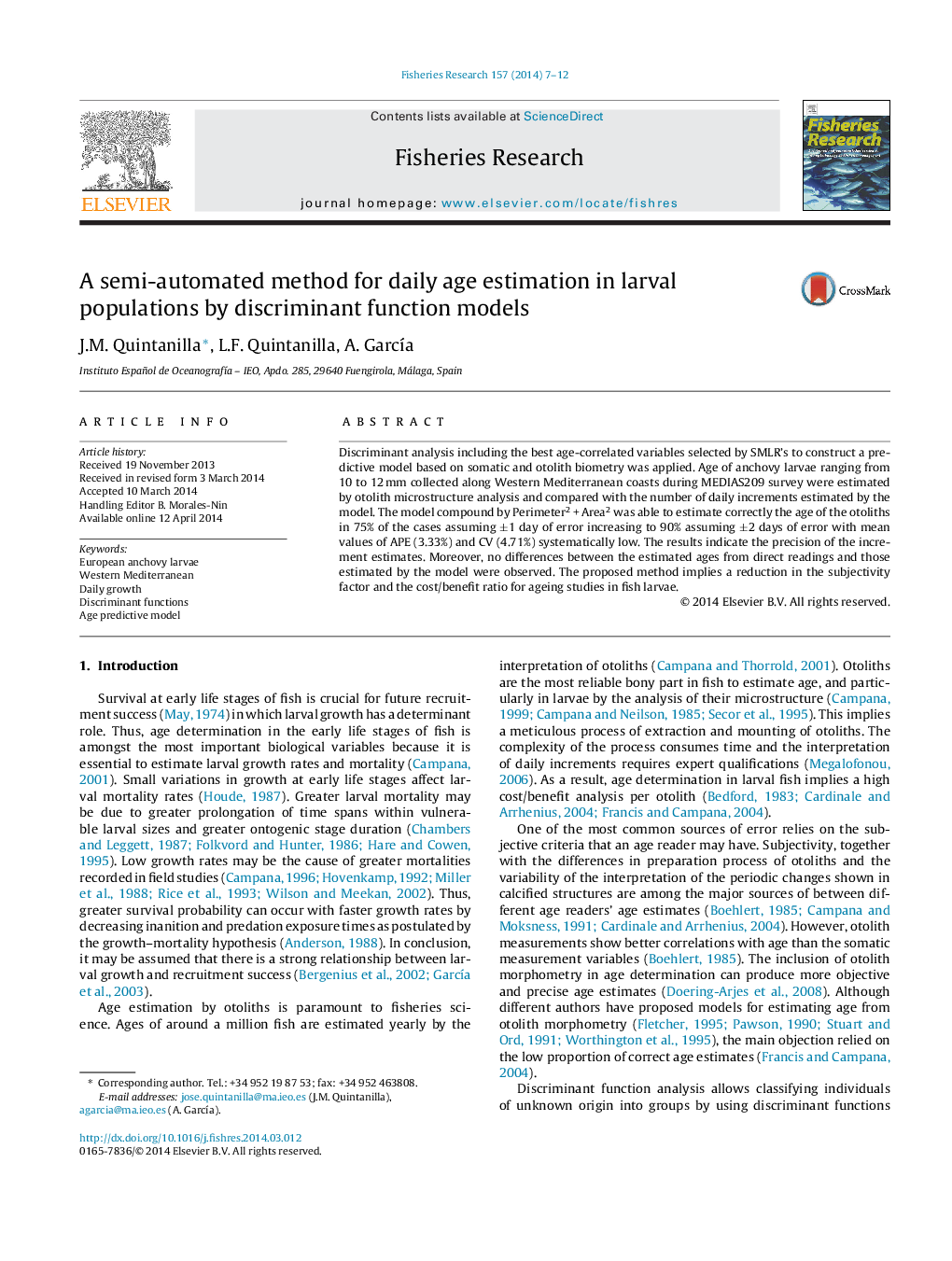| Article ID | Journal | Published Year | Pages | File Type |
|---|---|---|---|---|
| 4543035 | Fisheries Research | 2014 | 6 Pages |
•Best age-correlated variables in anchovy larvae were identified.•Discriminant functions showed high predictive capability for larval age estimations.•APE's and CV's are systematically low indicating the age precision estimates.•No significant differences between direct and estimated ages were detected.•Improved subjectivity and the cost/benefit ratio for growth studies in fish larvae.
Discriminant analysis including the best age-correlated variables selected by SMLR's to construct a predictive model based on somatic and otolith biometry was applied. Age of anchovy larvae ranging from 10 to 12 mm collected along Western Mediterranean coasts during MEDIAS209 survey were estimated by otolith microstructure analysis and compared with the number of daily increments estimated by the model. The model compound by Perimeter2 + Area2 was able to estimate correctly the age of the otoliths in 75% of the cases assuming ±1 day of error increasing to 90% assuming ±2 days of error with mean values of APE (3.33%) and CV (4.71%) systematically low. The results indicate the precision of the increment estimates. Moreover, no differences between the estimated ages from direct readings and those estimated by the model were observed. The proposed method implies a reduction in the subjectivity factor and the cost/benefit ratio for ageing studies in fish larvae.
